
 Max Nason
The Hockey Writers
Max Nason
The Hockey Writers
45
Reads
0
Comments
Flyers’ Best & Worst Trades
In the 53-year history of the Philadelphia Flyers franchise, nine different general managers have been responsible for an insane amount of trades. Although there have been plenty of trades involving low-level players or late draft picks, there have also been plenty of blockbuster deals that have drastically changed the franchise.
Related: Revisiting the Brayden Schenn Trade
Like any organization, the Flyers have been on both sides of a deal, good and bad. With every successful trade that significantly benefited the team, there was another that proves they got the worst of it.
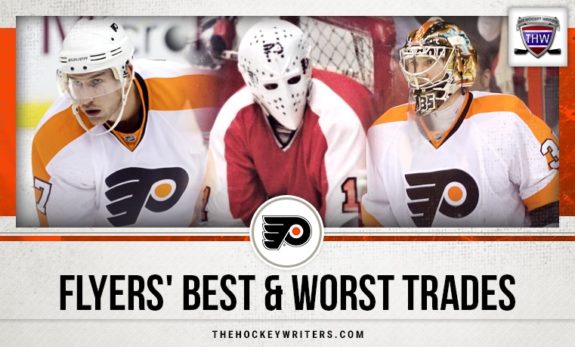
For the purposes of this list, we’re going to exclude any further mention of the massive deal that made Eric Lindros a Flyer. It’s debatable whether it was a good or bad trade, and would take too much of the shine away from some of the other entries. So, we’ll let you decide how you feel about that one.
In order from worst to best, with just one overlapping entry, let’s take a look at some of the best and worst trades in franchise history.
The Flyers’ Worst Trades
Hartnell for Umberger
Watching Scott Hartnell depart Philadelphia in
One of the first deals of Ron Hextall’s tenure as general manager was arguably his worst. Sending Hartnell to the Columbus Blue Jackets in exchange for R.J. Umberger and a fourth-round pick in 2015 didn’t make sense at the time and it still doesn’t make much sense today.
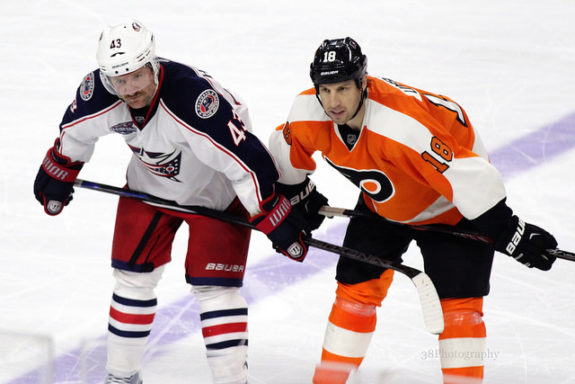
Umberger only played 106 games after the deal, racking up a whopping 26 points. Hartnell, on the other hand, played another four full seasons (296 games) between Columbus and eventually the Nashville Predators. His 170 points scored in his final four NHL seasons not only served as a great sendoff for a fantastic career but made this trade look that much worse.
Although the deal was made, in part, to dump Hartnell’s massive near $5 million cap hit, the Flyers could have
Trading Away Mr. Game 7
You can spot some bad trades right away, while others take the time to understand how truly bad they were. One that seemed bad at the time but worsened with age was Justin Williams.
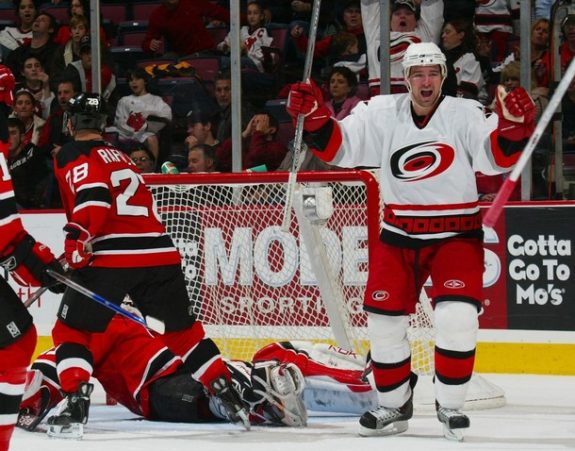
Back in January of 2004, the Flyers traded Justin Williams to the Carolina Hurricanes straight up for Danny Markov. Markov would play a total of 34 games for the Flyers, while Williams would win his first Stanley Cup in 2006 with the Hurricanes and two more with the Los Angeles Kings.
Everything about this trade didn’t make sense. The Flyers traded away a 22-year-old emerging star for a 27-year-old tough defenseman. There wasn’t a way to predict how short Markov’s time would be in Philadelphia or Williams’ potential, but it doesn’t look good in hindsight.
Another justification for the trade was that the Flyers needed a big, top-four defenseman for their Eastern Conference Final run that season. Even that doesn’t justify trading away a solid forward who would have an unbelievable future, winning three Cups, a Conn Smythe Trophy, and earning the nickname “Mr. Game 7” for his clutch performances in the postseason.
Sending Bernie Parent to Maple Leafs
Although they aren’t alone, the Flyers have a history of trading away players with tremendous upside. Williams was one example, but far from the most glaring, which was trading Bernie Parent to
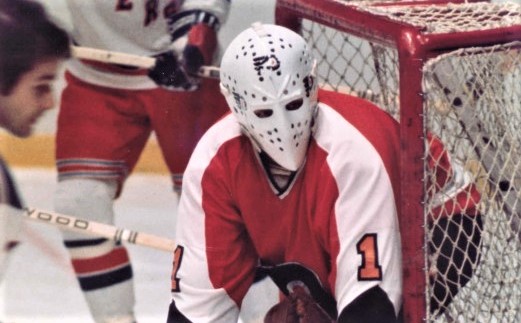
In 1971, general manager Keith Allen thought it was a good idea to trade away the Flyers’ potential franchise goaltender. He thought it was an even better idea to deal him for basically nothing.
For the goalie that would win multiple Cups, the Flyers received Bruce Gamble, Mike Walton, and a first-round pick that became Pierre Plante. Walton was later flipped to the Boston Bruins for Rick MacLeish and Danny Schock.
Related: Top 5 Goalies of the 1970s
However, the players from the original deal that sent Parent to the Maple Leafs played a collective 61 games for the Flyers. Even if they had all flourished in Philadelphia, it still wouldn’t have made up for trading away a franchise goaltender. Luckily, the Flyers eventually made up for the huge blunder.
Trading for the Lesser of Two Schenns
It’s a good thing that the Flyers have given up their strategy of trading away solid young talent and then trading back for them years later. That method got them nowhere, and it did them no favors in the case of James van Riemsdyk.
In 2012, the Flyers used him as the centerpiece of one of the most bizarre one-for-one trades in franchise history. After a few solid seasons, and at just 22 years old, van Riemsdyk was traded to the Maple Leafs for 22-year-old defenseman Luke Schenn, who was coming off back-to-back 22-point seasons.
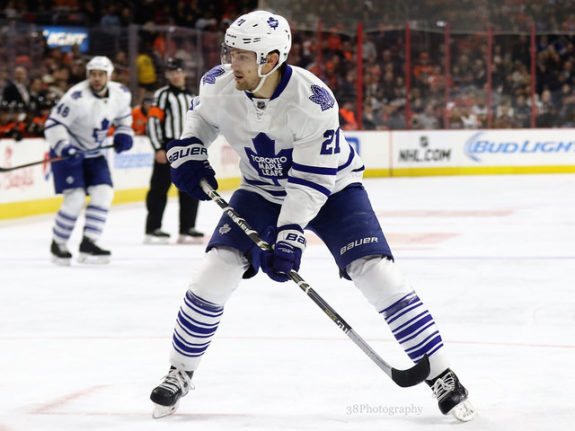
Even though the two were similar — both young, up-and-coming players — it’s what happened after the trade that made it such an awful deal. As a Maple Leaf, van Riemsdyk thrived, putting up impressive numbers in six seasons including a career-high 36 goals during the 2017-18 season.
As a Flyer, Schenn was fairly forgettable, with just 42 points in 213 games. He was never a highlight on the Flyers’ blue line.
When you revisit the deal, it feels like it was only made for a commodity. Paul Holmgren and the Flyers preferred having a set of brothers on the roster than a high-potential forward who they drafted second overall just five years before. It looks even worse when you consider that the Flyers eventually brought back a much older van Riemsdyk outside of his peak years.
Giving Up on Bob
We’ll preface this one by saying, yes, it worked out, and the Flyers again have a franchise goalie in the form of Carter Hart. However, it’s frightening to consider they’ve traded away two of their franchise netminders.
Related: Scotty Bowman – A Coach’s Life
Trading Sergei Bobrovsky in the summer of 2012 was a remarkably awful move by Holmgren. At the time, the team was ready to move forward with Ilya Bryzgalov as their starting goalie, which meant they had to get rid of Bob and did so for almost nothing in return.
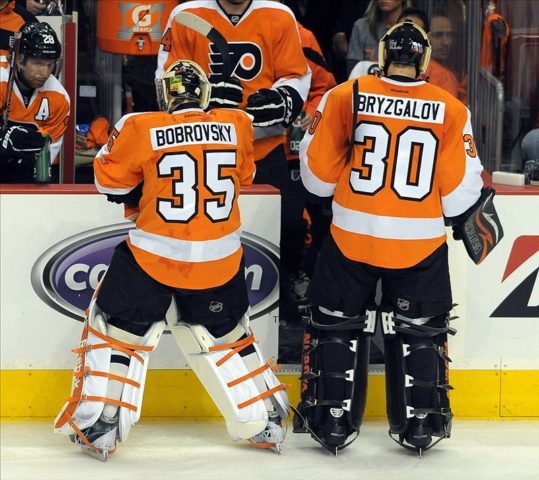
The return was horrific. For the player who would win a Vezina Trophy the following season, the Flyers managed to get a 2012 second-round pick and a couple of fourth-rounders from the Columbus Blue Jackets.
The players who came from those draft picks, Taylor Leier and Anthony Stolarz, have both found their way out of the Flyers’ system, so the Bobrovsky trade ultimately amounted to nothing.
It’s easily one of the most embarrassing deals of the Holmgren era and all of Flyers history. There’s no sympathy here, as it was clear to everyone that Bryzgalov was not the answer to the Flyers’ goaltending woes. However, Bob could’ve been that answer for years.
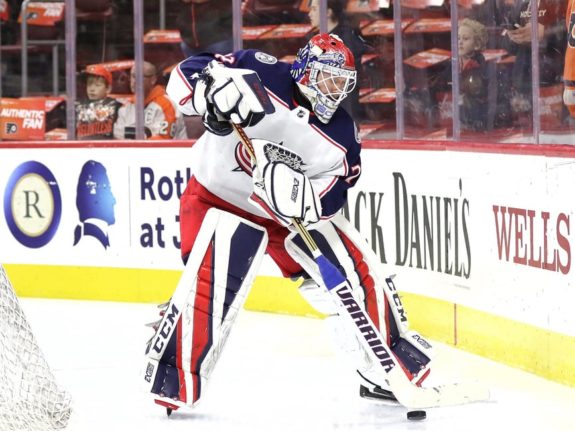
There’s no question that fans would’ve enjoyed seeing Bobrovsky in a Flyers jersey for all those years he thrived as a Blue Jacket.
The Flyers’ Best Trades
Acquiring Two Franchise Icons
The relationship between the Flyers and Mark Recchi is complicated and strange. After trading for Recchi in 1992, the Flyers flipped him just three seasons later.
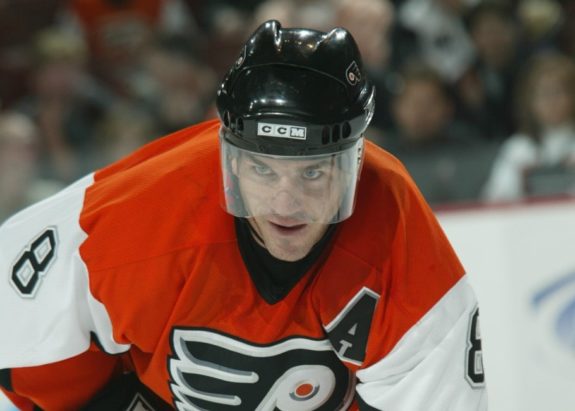
The trade felt like a risk after Recchi put up back-to-back 100-plus-point seasons in 1993 and 1994. However, when he was dealt to the Montreal Canadiens in the 1994-95 season, a move that would mark the early stages of Bobby Clarke’s time as general manager, the trade was too good to pass up.
Recchi, along with a 1995 third-round draft pick, was sent to the Canadiens in exchange for John LeClair, Eric Desjardins, and Gilbert Dionne. Dionne only played 20 games in Philadelphia, but the other players in the deal made it one of the best in the franchise’s history.
Desjardins and LeClair became staples of the Flyers franchise for the next 10 years, amassing over 1,000 points between them. Plus, the Flyers got Recchi back four seasons later for much less, making this trade look even better.
Between 1995 and 1999, the Flyers got the better of the Canadiens in both Recchi trades and helped develop some of the most beloved names in the team’s history.
Sending Coburn to Tampa
Ron Hextall’s tenure as the Flyers’ general manager wasn’t smooth, but that doesn’t mean it was all bad. Although he was at a fault for several questionable trades, he ultimately set the team up for the future.
In 2015, j
Radko Gudas was a solid return for Coburn, but it was all about the first- and
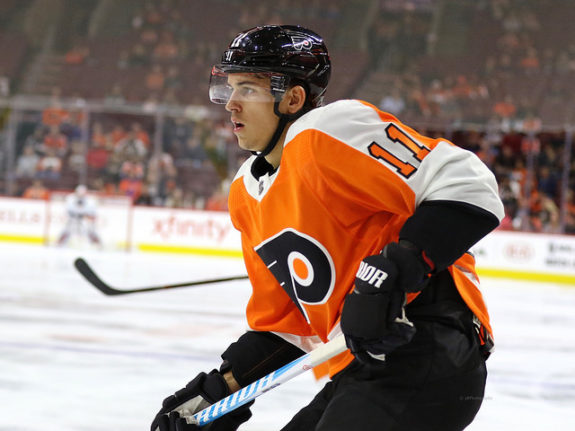
Trading Coburn for Konecny and Gudas, plus an additional draft pick, was highway robbery. Aside from some bad deals along the way, there was a lot of good during Hextall’s tenure. Adding a franchise forward via trade in the same draft that he locked up a franchise defenseman (Ivan Provorov) is a wildly impressive feat and one of the most underappreciated moves in Flyers’ history.
Flipping Forsberg
Shield your eyes Predators fans. In 2007, it was hard not to be excited about Peter Forsberg coming to town, which makes it even harder to believe that trading him was better.
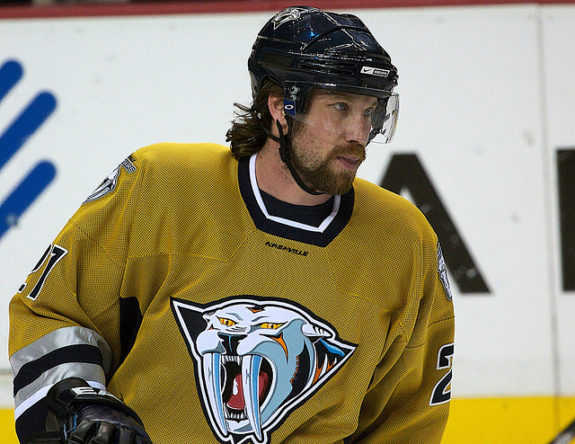
After playing just 100 games with the Flyers, Forsberg was dealt to the Predators in exchange for Ryan Parent, Scottie Upshall, and a first and third-round pick in the 2007 NHL Draft. That first-round pick was significant.
Just months after trading Forsberg, who would play 28 NHL games following the trade, the Flyers flipped that first-round pick. Actually, they flipped it back to the Predators for the rights to both Scott Hartnell and Kimmo Timonen.
When all was said and done, Holmgren managed to trade Forsberg for, essentially, Ryan Parent, Scottie Upshall, Scott Hartnell, Kimmo Timonen, and a third-round pick. Even though it was hard to watch Forsberg go, the return was much, much sweeter.
Bringing Bernie Back
It’s safe to say that the Flyers horribly mishandled Parent. Back in the Keith Allen era, the team was fairly new and looking for their first crack at the Stanley Cup. Somehow, in Allen’s mind, that meant dealing one of their best players away.
As mentioned, Allen and the Flyers, for whatever reason, dealt goaltender Bernie Parent to the Maple Leafs for a small return in 1971. Rick MacLeish was a decent compromise in the end, but you’d expect them to have a higher asking price for their franchise goaltender.
Allen, however, managed to make up for the debacle just two years later. In 1973, Allen traded Doug Favell and a first-round pick to the Maple Leafs for Parent and a second-round pick that would turn out to be Larry Goodenough.
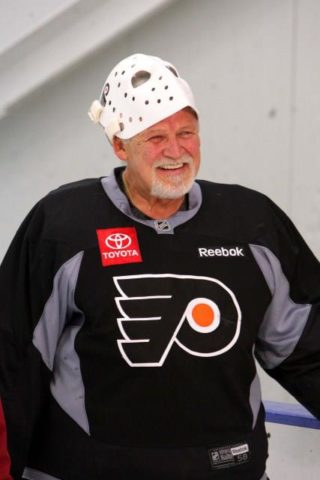
Trading Parent away was an awful move and one that could’ve been detrimental. However, Allen was impressive in salvaging the deal and getting Parent back for a small return. Well, there’s really no other way to fix trading your franchise goalie besides trading back for him almost immediately.
Dealing Carter for Voracek & Couturier
Regardless of the bad deals he oversaw as either the general manager or president of the Flyers, Paul Holmgren is responsible for one of the best deals in franchise history.
After the loss in the 2010 Stanley Cup Final, the Flyers started to unravel. Head coach Peter Laviolette seemed to be losing his locker room, and that started with two key players: Mike Richards and Jeff Carter.
Whatever the problem, it was solved on June 23, 2011. Both players were traded for massive returns. The Richards trade in itself was a fantastic swap, bringing Wayne Simmonds and Brayden Schenn to Philadelphia. However, the Carter trade was a masterpiece.
Sending Carter to the Blue Jackets, Holmgren was somehow able to acquire both Jake Voracek and first and third-round picks in 2011. The first-rounder would, of course, become Sean Couturier.
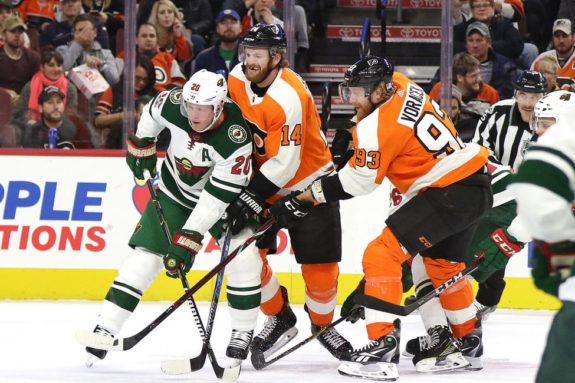
This trade got better with age. There was no way to predict that Voracek or that first-round pick would turn into cornerstone members of the team. The deal, however, was a stroke of genius by Holmgren and the Flyers and is considered one of the best trades in franchise history.
The post Flyers’ Best & Worst Trades appeared first on The Hockey Writers.
Popular Articles

















































 Canucks Vancouver
Canucks Vancouver Sharks San Jose
Sharks San Jose Flames Calgary
Flames Calgary Avalanche Colorado
Avalanche Colorado Coyotes Arizona
Coyotes Arizona Golden Knights Vegas
Golden Knights Vegas Wild Minnesota
Wild Minnesota Red Wings Detroit
Red Wings Detroit Blues St. Louis
Blues St. Louis Blackhawks Chicago
Blackhawks Chicago Blue Jackets Columbus
Blue Jackets Columbus Hurricanes Carolina
Hurricanes Carolina Jets Winnipeg
Jets Winnipeg Predators Nashville
Predators Nashville Ducks Anaheim
Ducks Anaheim Oilers Edmonton
Oilers Edmonton Sabres Buffalo
Sabres Buffalo Rangers New York
Rangers New York Bruins Boston
Bruins Boston Panthers Florida
Panthers Florida Senators Ottawa
Senators Ottawa Lightning Tampa Bay
Lightning Tampa Bay Capitals Washington
Capitals Washington Islanders New York
Islanders New York Devils New Jersey
Devils New Jersey Maple Leafs Toronto
Maple Leafs Toronto Flyers Philadelphia
Flyers Philadelphia Penguins Pittsburgh
Penguins Pittsburgh Stars Dallas
Stars Dallas Kraken Seattle
Kraken Seattle Kings Los Angeles
Kings Los Angeles






